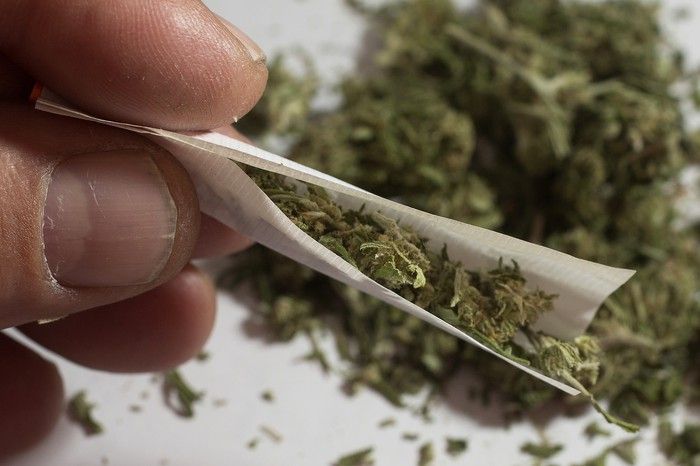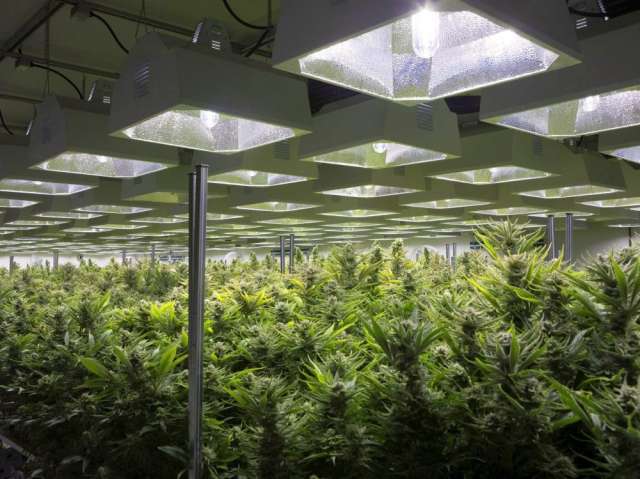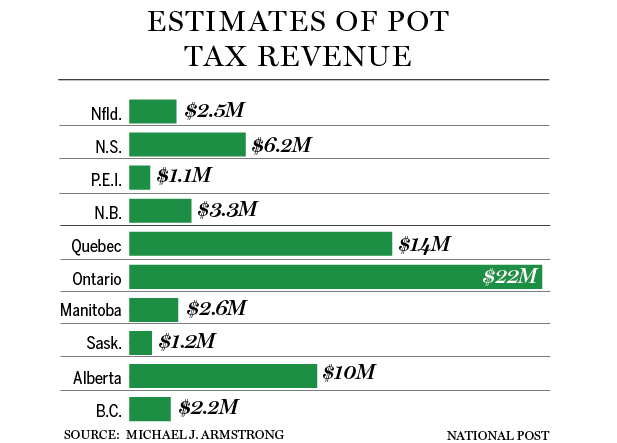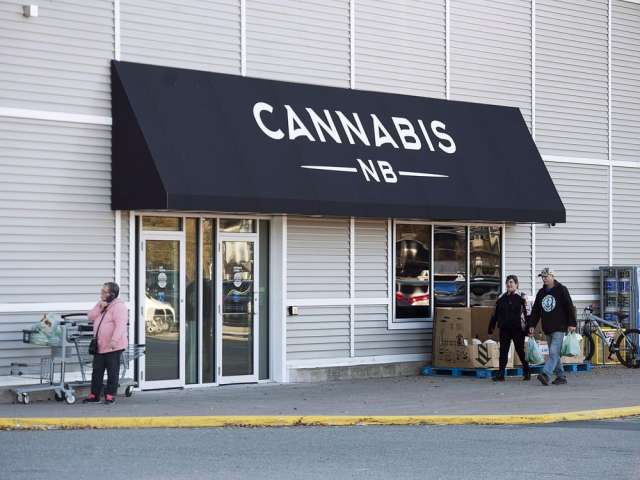Baron23
Well-Known Member
"According to Scotiabank, logistical issues are expected to allow the black market to control 71% of all Canadian cannabis sales in 2019, with this figure plummeting to 37% by 2020"
Politicians and government bureaucrats....the absolute kings of unintended consequences and shortsightedness.
Canada's black market to control 71% of marijuana sales in 2019
The marijuana industry had itself a year in 2018 like none before it. Having entered the year as a still somewhat taboo topic, cannabis exited 2018 on solid ground. That's because the industry was legitimized following the legalization of recreational pot in Canada on Oct. 17, 2018.
The passage of the Cannabis Act in June and the official kickoff of sales in October rolled out the red carpet (or dare I say "green" carpet) for the legal weed industry, which should result in billions of dollars in added annual sales by the early part of the upcoming decade. This legalization also signaled that the pot industry was here to stay and to welcome investors.
But in spite of Canada going green, the industry itself hasn't exactly launched out of the gate as expected. Rather, it's dealt with a series of logistical issues that have worked to constrain supply at a time when residents and tourists are eager to buy cannabis products.
Canada's cannabis industry is facing a number of logistical challenges
Just hours after legal sales commenced in October, a dispensary in Winnipeg, Manitoba, ran out of product and had to shutter its doors. Supply issues have plagued practically every Canadian province at one point, and there's no exact timetable on when supply will be sufficient to meet demand.
How, exactly, did the industry and regulators not foresee this coming? One problem is with Health Canada itself. The regulatory agency tasked with overseeing the legal weed industry is absolutely buried in cultivation license and sales permit applications. Back in May 2018, Marijuana Business Daily found that Health Canada had a backlog of more than 500 cultivation license applications and that sales permits were taking, on average, 341 days to be issued following the receipt of the application. Essentially, it's taking more than a year to complete the process of getting approved to plant cannabis crops and then selling those crops.
Another under-the-radar issue is packaging. Prior to the launch of recreational cannabis products, Health Canada outlined a rigorous set of packaging regulations that would need to be followed if marijuana products were to be approved for sale. This included creating packaging that was tamper and child resistant and that contained a yellow warning label. These restrictions have led to a packaging shortage. If that isn't an opportunity for branding and packaging specialist KushCo Holdings to step up and shine in the months to come, I don't know what is.
The ongoing ramp-up of capacity in Canada is the third and final major problem. While growers would have preferred to have started construction on greenhouses earlier, none were willing to pony up $100 million or more without knowing with certainty that the Cannabis Act would become law. Prime Minister Justin Trudeau had spoken of legalization for years without any legislative follow-through, which caused growers to wait until December 2017 or January 2018 before they really began expanding their capacity. It'll likely be two more years before the industry is operating on all cylinders.
The black market is loving this logistical nightmare
Then again, the underground market for marijuana, often referred to as the black market, has to be enjoying these logistical challenges. Having insufficient supply in dispensaries creates the perfect opportunity for illicit growers to take or reaffirm their market share.
As a reminder, legal sales channels involve a 10% excise tax, require profitable companies to pay federal corporate income tax, and take time to get the appropriate cultivation licenses and sales permits. Black-market marijuana, on the other hand, has no excise taxes to pay, nor federal income taxes, and the underground growers certainly don't abide by cultivation licenses or sales permits. In other words, the illicit market can handily beat legal sales channels on price, making them an attractive go-to for consumers.
However, it's always been hard to quantify how much of the cannabis market illicit growers control. A new research note from Scotiabank analysts Oliver Rowe and Ben Isaacson, courtesy of BNN Bloomberg, specified this figure.
According to Scotiabank, logistical issues are expected to allow the black market to control 71% of all Canadian cannabis sales in 2019, with this figure plummeting to 37% by 2020, once many of these packaging and regulatory red-tape issues are dealt with. Further, the firm lowered its projected sales of legal cannabis in 2019 by 30% and slashed revenue estimates in the fiscal third quarter for Canopy Growth (NYSE:CGC), the largest pot stock in the world, by more than 40% to 79 million Canadian dollars.

On one hand, the expectation that a third of all purchases in Canada will shift from the black market to legal sales channels in the span of one year is incredible. If accurate, it demonstrates that Trudeau's push for a low excise tax rate of 10% will be justified.
On the other hand, it's just as staggering to realize that more than two out of three marijuana sales this year are liable to be conducted under the table and out of the sight of regulators. That's a massive amount of lost revenue for a legal cannabis industry that's trying to prove its worth to investors.
For example, Canopy Growth has had plenty of things working in its favor. It landed a $4 billion equity investment from Corona and Modelo beer maker Constellation Brands, is projected to be the second-largest grower by peak annual output, and has what's arguably the most well-known cannabis brand in its product portfolio in Tweed. But it's also a company that lost a whopping CA$215 million on an operating basis this past quarter, and that's not going to get any better anytime soon until these logistical issues throughout the country are dealt with. That makes Canopy Growth and many of its peers particularly risky investments.
Even though this is an estimate from a solitary investment bank, it speaks volumes to the challenges yet to be tackled by the legal cannabis industry.
Politicians and government bureaucrats....the absolute kings of unintended consequences and shortsightedness.
Canada's black market to control 71% of marijuana sales in 2019
The marijuana industry had itself a year in 2018 like none before it. Having entered the year as a still somewhat taboo topic, cannabis exited 2018 on solid ground. That's because the industry was legitimized following the legalization of recreational pot in Canada on Oct. 17, 2018.
The passage of the Cannabis Act in June and the official kickoff of sales in October rolled out the red carpet (or dare I say "green" carpet) for the legal weed industry, which should result in billions of dollars in added annual sales by the early part of the upcoming decade. This legalization also signaled that the pot industry was here to stay and to welcome investors.
But in spite of Canada going green, the industry itself hasn't exactly launched out of the gate as expected. Rather, it's dealt with a series of logistical issues that have worked to constrain supply at a time when residents and tourists are eager to buy cannabis products.
Canada's cannabis industry is facing a number of logistical challenges
Just hours after legal sales commenced in October, a dispensary in Winnipeg, Manitoba, ran out of product and had to shutter its doors. Supply issues have plagued practically every Canadian province at one point, and there's no exact timetable on when supply will be sufficient to meet demand.
How, exactly, did the industry and regulators not foresee this coming? One problem is with Health Canada itself. The regulatory agency tasked with overseeing the legal weed industry is absolutely buried in cultivation license and sales permit applications. Back in May 2018, Marijuana Business Daily found that Health Canada had a backlog of more than 500 cultivation license applications and that sales permits were taking, on average, 341 days to be issued following the receipt of the application. Essentially, it's taking more than a year to complete the process of getting approved to plant cannabis crops and then selling those crops.
Another under-the-radar issue is packaging. Prior to the launch of recreational cannabis products, Health Canada outlined a rigorous set of packaging regulations that would need to be followed if marijuana products were to be approved for sale. This included creating packaging that was tamper and child resistant and that contained a yellow warning label. These restrictions have led to a packaging shortage. If that isn't an opportunity for branding and packaging specialist KushCo Holdings to step up and shine in the months to come, I don't know what is.
The ongoing ramp-up of capacity in Canada is the third and final major problem. While growers would have preferred to have started construction on greenhouses earlier, none were willing to pony up $100 million or more without knowing with certainty that the Cannabis Act would become law. Prime Minister Justin Trudeau had spoken of legalization for years without any legislative follow-through, which caused growers to wait until December 2017 or January 2018 before they really began expanding their capacity. It'll likely be two more years before the industry is operating on all cylinders.
The black market is loving this logistical nightmare
Then again, the underground market for marijuana, often referred to as the black market, has to be enjoying these logistical challenges. Having insufficient supply in dispensaries creates the perfect opportunity for illicit growers to take or reaffirm their market share.
As a reminder, legal sales channels involve a 10% excise tax, require profitable companies to pay federal corporate income tax, and take time to get the appropriate cultivation licenses and sales permits. Black-market marijuana, on the other hand, has no excise taxes to pay, nor federal income taxes, and the underground growers certainly don't abide by cultivation licenses or sales permits. In other words, the illicit market can handily beat legal sales channels on price, making them an attractive go-to for consumers.
However, it's always been hard to quantify how much of the cannabis market illicit growers control. A new research note from Scotiabank analysts Oliver Rowe and Ben Isaacson, courtesy of BNN Bloomberg, specified this figure.
According to Scotiabank, logistical issues are expected to allow the black market to control 71% of all Canadian cannabis sales in 2019, with this figure plummeting to 37% by 2020, once many of these packaging and regulatory red-tape issues are dealt with. Further, the firm lowered its projected sales of legal cannabis in 2019 by 30% and slashed revenue estimates in the fiscal third quarter for Canopy Growth (NYSE:CGC), the largest pot stock in the world, by more than 40% to 79 million Canadian dollars.

On one hand, the expectation that a third of all purchases in Canada will shift from the black market to legal sales channels in the span of one year is incredible. If accurate, it demonstrates that Trudeau's push for a low excise tax rate of 10% will be justified.
On the other hand, it's just as staggering to realize that more than two out of three marijuana sales this year are liable to be conducted under the table and out of the sight of regulators. That's a massive amount of lost revenue for a legal cannabis industry that's trying to prove its worth to investors.
For example, Canopy Growth has had plenty of things working in its favor. It landed a $4 billion equity investment from Corona and Modelo beer maker Constellation Brands, is projected to be the second-largest grower by peak annual output, and has what's arguably the most well-known cannabis brand in its product portfolio in Tweed. But it's also a company that lost a whopping CA$215 million on an operating basis this past quarter, and that's not going to get any better anytime soon until these logistical issues throughout the country are dealt with. That makes Canopy Growth and many of its peers particularly risky investments.
Even though this is an estimate from a solitary investment bank, it speaks volumes to the challenges yet to be tackled by the legal cannabis industry.


